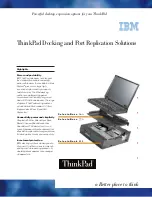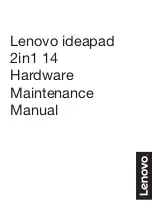
Troubleshooting
Flashing the BIOS
You may need to flash (update) the BIOS when an update is available or when you replace the system board.
Follow these steps to flash the BIOS:
1
Turn on your computer.
2 Go to
3 Click Product support, enter the Service Tag of your computer, and then click Submit.
NOTE: If you do not have the Service Tag, use the auto-detect feature or manually browse for your computer
model.
4 Click Drivers & downloads
→
Find it myself.
5 Select the operating system installed on your computer.
6 Scroll down the page and expand BIOS.
7 Click Download to download the latest version of the BIOS for your computer.
8 After the download is complete, navigate to the folder where you saved the BIOS update file.
9 Double-click the BIOS update file icon and follow the instructions on the screen.
Flashing BIOS (USB key)
1
Follow the procedure from step 1 to step 7 in "
" to download the latest BIOS setup program file.
2 Create a bootable USB drive. For more information see the knowledge base article
3 Copy the BIOS setup program file to the bootable USB drive.
4 Connect the bootable USB drive to the computer that needs the BIOS update.
5 Restart the computer and press F12 when the Dell logo is displayed on the screen.
6 Boot to the USB drive from the One Time Boot Menu.
7 Type the BIOS setup program filename and press Enter.
8 The BIOS Update Utility appears. Follow the instructions on the screen to complete the BIOS update.
Enhanced Pre-Boot System Assessment (ePSA) diagnostics
CAUTION: Use the ePSA diagnostics to test only your computer. Using this program with other computers may
cause invalid results or error messages.
The ePSA diagnostics (also known as system diagnostics) performs a complete check of your hardware. The ePSA is embedded
with the BIOS and is launched by the BIOS internally. The embedded system diagnostics provides a set of options for particular
devices or device groups allowing you to:
•
Run tests automatically or in an interactive mode
•
Repeat tests
•
Display or save test results
•
Run thorough tests to introduce additional test options to provide extra information about the failed device(s)
•
View status messages that inform you if tests are completed successfully
•
View error messages that inform you of problems encountered during testing
NOTE: Some tests for specific devices require user interaction. Always ensure that you are present at the computer
terminal when the diagnostic tests are performed.
For more information, see
108
Summary of Contents for Alienware Area-51m
Page 18: ...3 Tighten the six captive screws that secure the base cover to the computer base 18 ...
Page 20: ...3 Lift the battery off the palm rest assembly 20 ...
Page 23: ...3 Remove the memory module from the memory module slot 23 ...
Page 26: ...5 Disconnect the antenna cables from the wireless card 26 ...
Page 28: ...Post requisites Replace the base cover 28 ...
Page 38: ...Post requisites Replace the base cover 38 ...
Page 45: ...4 Replace the base cover 45 ...
Page 49: ...6 Lift the touchpad off the palm rest assembly 49 ...
Page 54: ...12 Lift the display assembly off the palm rest assembly 54 ...
Page 59: ...13 Lift the computer base off the palm rest assembly 59 ...
Page 63: ...4 Lift the heat sink assembly off the system board 63 ...
Page 68: ...7 Replace the base cover 68 ...
Page 70: ...4 Lift the processor straight up to remove it from the system board 70 ...
Page 73: ...5 Lift the graphics card off the system board 73 ...
Page 75: ...6 Replace the battery 7 Replace the base cover 75 ...
Page 78: ...11 Remove the left power adapter port 78 ...
Page 79: ...12 After performing all the above steps you are left with the system board 79 ...
Page 84: ...84 ...
Page 86: ...10 Replace the battery 11 Replace the base cover 86 ...
Page 89: ...8 Lift the keyboard from bottom and slide out of the clips at top 89 ...
Page 93: ...93 ...
Page 95: ...11 Replace the battery 12 Replace the base cover 95 ...
Page 97: ...97 ...




































